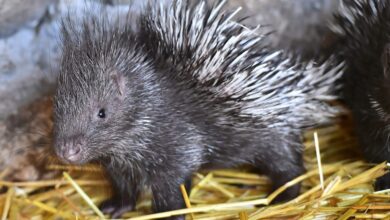Dodo Resurgence: Is it Possible for Extinct Animals to Return?
Can we bring extinct animals back? The ambitious plan to resurrect the dodo is underway. However, it is a practice that must be carefully analyzed from bioethics

Photo: Jebulon
LatinAmerican Post | Jorge Francisco Vuelvas Lomeli
Listen to this article
Leer en español: Resurgimiento del dodo: ¿Es viable que vuelvan las especies extintas?
A team of scientists led by paleogeneticist Beth Shapiro and biotech startup Colossal Biosciences is using advances in ancient DNA sequencing, gene-editing technology and synthetic biology to revive the dodo, a centuries-old extinct bird. But, what ethical and practical implications does this initiative entail? Learn about concerns in ecosystem interference, competition for resources, the spread of disease, and lack of habitat in this article about the plan to resurrect this extinct animal.
Dodo revitalization: an ongoing project
Professor Shapiro, from the University of California, Santa Cruz, has already taken an important step by completing the complete sequencing of the dodo genome from genetic material extracted from its remains in Denmark. The next phase is to compare this genetic information with the dodo's living and extinct relatives in the pigeon family, such as the Nicobar pigeon and Rodrigues solitaire, to identify the mutations in the genome that "make the dodo a dodo."
Colossal Biosciences, founded by tech entrepreneur Ben Lamm and Harvard geneticist George Church, is in charge of carrying out the project to revive the dodo and other extinct species such as the woolly mammoth and the Tasmanian tiger.
Before proceeding with the resurrection of extinct species, it is essential to consider the ethical and practical implications that it entails. The reintroduction of an extinct species could have an impact on existing ecosystems, upsetting their natural balance. The new species could compete for resources with existing species, introduce new diseases and pests into the ecosystem, and lack suitable habitat. The resurrection of an extinct species may sound futuristic, but its implications need to be considered before making a decision.
Implications of reviving extinct species
Interference in ecosystems: The reintroduction of an extinct species can have a detrimental impact on existing ecosystems and upset the natural balance. The new species may compete with the pre-existing species for resources, which may endanger their subsistence and consequently affect the biological diversity in the area. Furthermore, the newly arrived species may also introduce new diseases and pests into the ecosystem, which could have a negative impact on already existing species.
Also read: What's Been Doing for Jaguar Preservation in Latin America?
Contest for resources: The resurrection of an extinct species puts it in competition for the same resources as pre-existing species, such as food, water, and habitat. This could result in a decrease in the survival and population of pre-existing species and, consequently, a negative impact on biodiversity in the area.
Disease spread: The revival of an extinct species could also bring back diseases that caused its demise in the first place. These diseases could be transmitted to pre-existing species, which could result in a decrease in their population and a negative impact on biodiversity in the area.
Lack of habitat: Relocation of an extinct species to a habitat other than the one it used to inhabit could result in an inhospitable environment for its survival, which could lead to its disappearance again. Furthermore, the construction of new habitats for the extinct species could require the destruction of existing habitats for pre-existing species, which could have a negative impact on biodiversity in the area.
Can this be used to combat the extinction of a species?
The possibility of reviving extinct species, such as the dodo, provides a unique opportunity to safeguard other species on the verge of extinction. The ancient DNA sequencing technology, gene editing and synthetic biology used in this project could be applied to other endangered species.
For example, researchers could take advantage of the genetic information obtained from deceased species to determine the factors that contributed to their extinction and thus prevent the disappearance of similar ones. Furthermore, this technology could be used to enrich the genetic diversity of at-risk populations, thus improving their ability to cope with changes in their environment and resist disease.
However, there are also ethical and environmental concerns about using this technology to prevent species extinction. For example, there is concern that this technology is being used to justify the continuation of harmful practices that led to extinction in the first place, rather than addressing the underlying causes.
Ultimately, it is vital to carefully consider the ethical and environmental implications before using species resurrection technology to prevent the extinction of other species. It is necessary to face the root causes of extinction and promote sustainable practices to guarantee the protection of all species, both existing and at risk of extinction.




